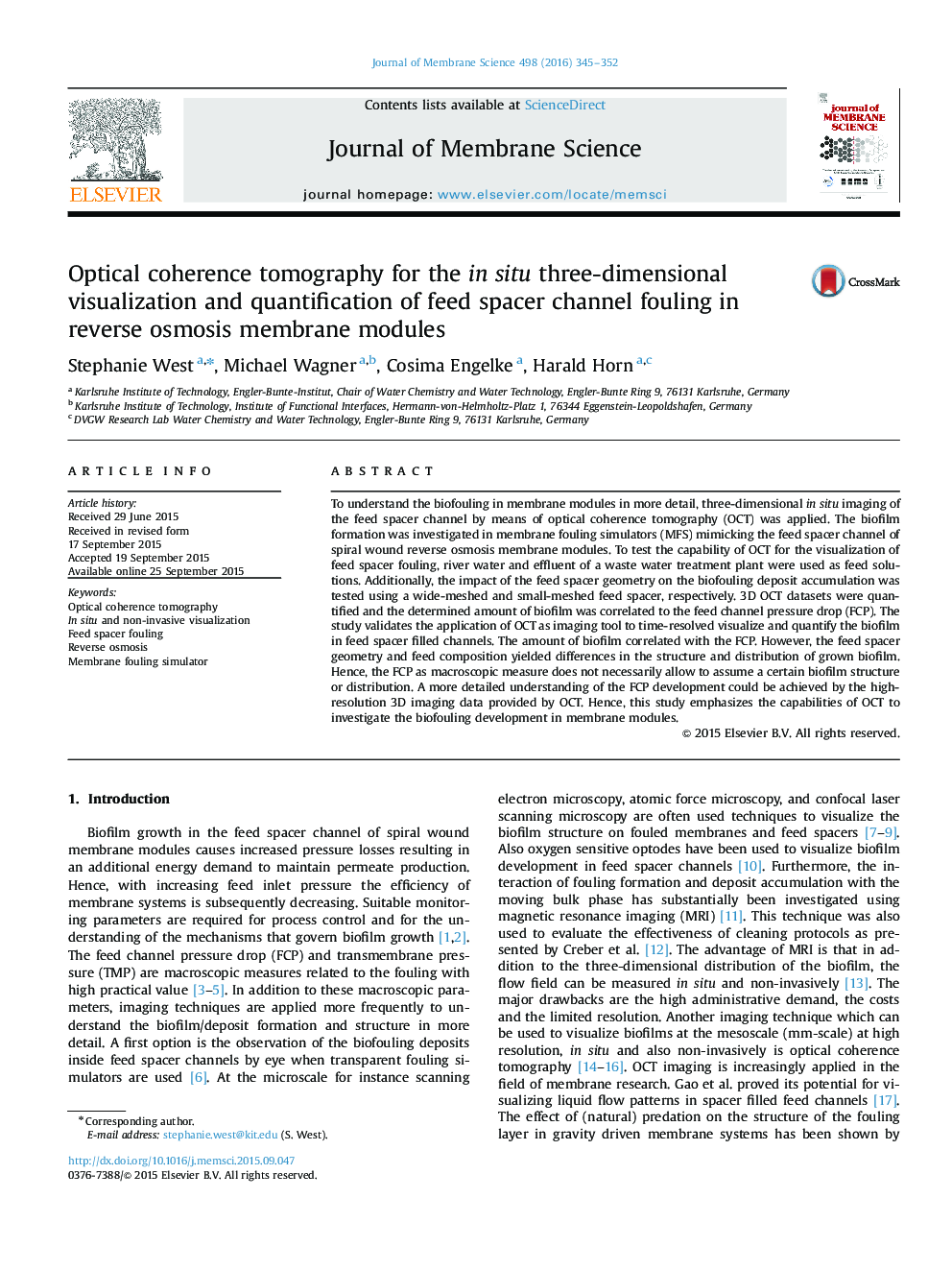| Article ID | Journal | Published Year | Pages | File Type |
|---|---|---|---|---|
| 632833 | Journal of Membrane Science | 2016 | 8 Pages |
To understand the biofouling in membrane modules in more detail, three-dimensional in situ imaging of the feed spacer channel by means of optical coherence tomography (OCT) was applied. The biofilm formation was investigated in membrane fouling simulators (MFS) mimicking the feed spacer channel of spiral wound reverse osmosis membrane modules. To test the capability of OCT for the visualization of feed spacer fouling, river water and effluent of a waste water treatment plant were used as feed solutions. Additionally, the impact of the feed spacer geometry on the biofouling deposit accumulation was tested using a wide-meshed and small-meshed feed spacer, respectively. 3D OCT datasets were quantified and the determined amount of biofilm was correlated to the feed channel pressure drop (FCP). The study validates the application of OCT as imaging tool to time-resolved visualize and quantify the biofilm in feed spacer filled channels. The amount of biofilm correlated with the FCP. However, the feed spacer geometry and feed composition yielded differences in the structure and distribution of grown biofilm. Hence, the FCP as macroscopic measure does not necessarily allow to assume a certain biofilm structure or distribution. A more detailed understanding of the FCP development could be achieved by the high-resolution 3D imaging data provided by OCT. Hence, this study emphasizes the capabilities of OCT to investigate the biofouling development in membrane modules.
